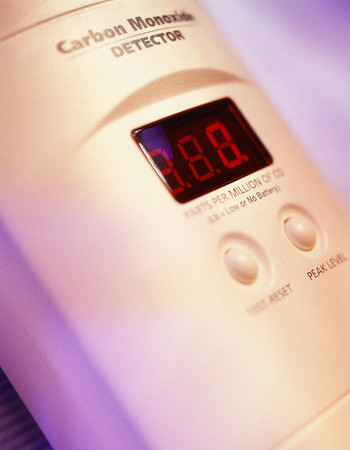




Healthy Lifestyle
Staying Safe From Carbon Monoxide Poisoning
It’s a startling statistic: More than 400 Americans die each year from unintentional carbon monoxide poisoning. And there’s often a spike in such deaths as the weather turns colder.
What is carbon monoxide?
It’s often referred to as the silent killer, and for good reason. Carbon monoxide (CO) is a colorless, odorless gas that comes from burning fuel (think cars, gas fireplaces, furnaces, stoves, ovens and even wood and charcoal).
When it’s inhaled, it’s absorbed into the bloodstream. Because CO molecules stick to hemoglobin in red blood cells better than oxygen, it replaces oxygen within those cells. When less oxygen is delivered to the body, organ damage or even death can occur.
CO poisoning symptoms
While your senses may clue you in to the presence of most poisons, carbon monoxide is undetectable by humans. Even more dangerous, symptoms of poisoning are fairly vague and resemble symptoms of influenza, which is also common in the winter.
Some of the most common symptoms of CO poisoning include:
- Headache
- Nausea and vomiting
- Dizziness
- Weakness
- Confusion
Certain levels of carbon monoxide are dangerous to everyone, but those most at risk for CO poisoning include:
- Infants and the very young
- Elderly individuals
- Those with certain chronic medical conditions such as lung disease, heart disease or anemia
Preventing CO poisoning
It’s human nature to want to stay warm when the weather turns cold, but how you go about doing that is critical when it comes to preventing carbon monoxide poisoning.
Practice these tips when the temperature dips:
- Avoid running vehicles inside garages, especially those attached to your home. Even if the garage door is open, wind can force exhaust fumes back into the garage or prevent them from escaping altogether.
- Never run generators, use portable stoves or burn charcoal inside the home.
- Don’t use gas stoves or ovens to heat the home.
- Have your gas- or other fuel-burning appliances serviced at least once a year to ensure they’re working properly.
Keep in mind: While prevention is important, a good carbon monoxide detector can be lifesaving.
What to look for in a carbon monoxide detector
It’s one thing to have a detector. It’s another to have the right detector(s). Here’s a checklist of things to look for and locations to think about:
 Carbon Monoxide Detector Checklist
Carbon Monoxide Detector Checklist
It’s battery operated
It provides a readout of CO
concentration
It meets UL Standard 2034
(this can be found on the device)
There is one on every floor and placed
five feet from the ground
There is one within 10 feet of every
bedroom
You should change the batteries in your detectors at least twice a year. This is easy to remember if you stick to the daylight saving rule: Change your batteries when you change your clocks. Also, pay attention to the life span of your detectors and replace them appropriately.
If a CO detector alarm goes off or you believe you have CO poisoning, get out of the house immediately and call 911. Don’t try to treat CO poisoning yourself, and never drive yourself to the hospital.
More Resources
- Make an appointment with Dr. Brian Harris
- Find more information about carbon monoxide poisoning at cdc.gov/co
- Read more from Methodist providers regarding Today's Medicine


